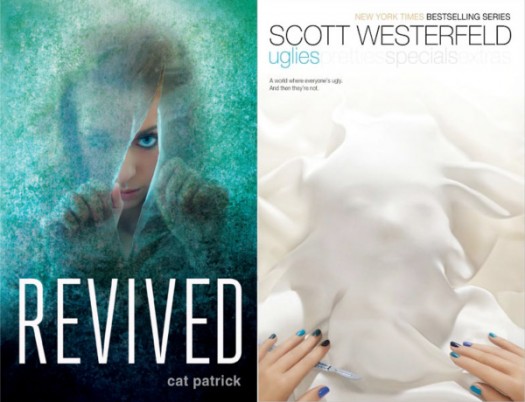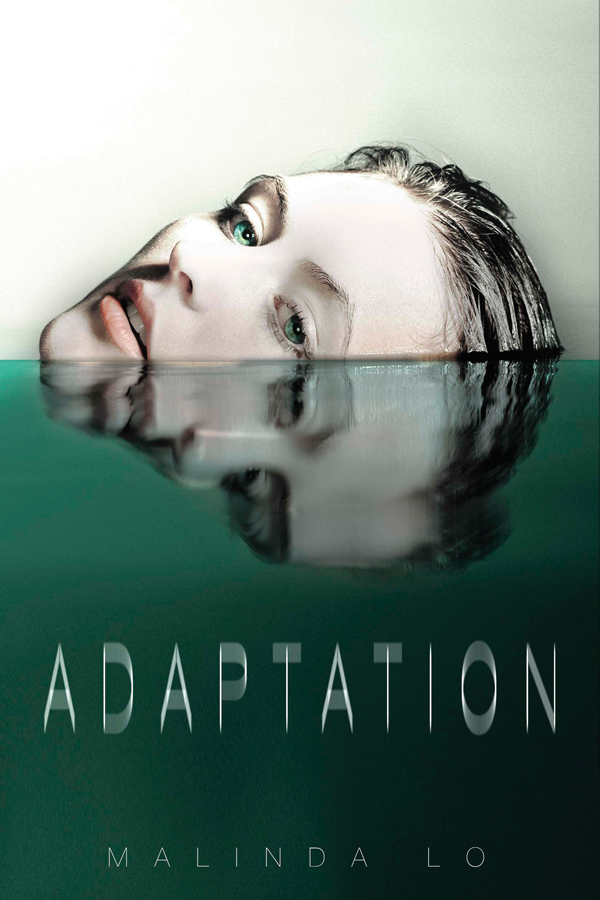Symbolism and the Adaptation cover
Over the last month or so, as reviews and reactions to Adaptation have started to trickle in, I've noticed a couple of blog posts in which bloggers say that they don't understand how the cover of the book is related to the story. Since I was involved in suggesting the cover concept for Adaptation, I thought I'd blog about what I wanted the cover to look like, as well as my own interpretation of the final image. I usually don't publicly discuss the symbolism in my books because I think it's more interesting to hear about the symbols readers find, and I don't want anyone to think that my interpretation is the right one. It isn't; it's only one interpretation. But because in this case I'm discussing an image that is supposed to represent my work — symbols upon symbols, so meta! — I thought I'd give it a go. Keep in mind, again, that this is my interpretation only. I haven't discussed this with the book's designer, Alison Impey, and she may have a totally different interpretation.
Spoiler Note: I have tried to keep this post totally spoiler-free. That means I'm a little vague, but if you read closely, you could potentially be spoiled. Hopefully, you'll just be intrigued.
About a year ago I sent my editor an email with a bunch of cover concepts for Adaptation. I didn't actually expect my publisher to use them, but I thought what the hell, might as well share. In Adaptation, the main character goes through a life-changing experience, and I thought that it would be great if the book cover could reflect this. I suggested that the following images might be good ways to reflect this experience:

I also looked around online and found this deliciously creepy image on Deviant Art:
I also suggested this one:

With this cover, I noted: "the floating girl is kind of becoming a thing that's been done in YA, but I can still see it work for Adaptation. ... But it would be better if the girl is not wearing a dress."
Shortly afterward, my editor told me that she had shared my cover ideas with the designer, and they had gone with one of them. I admit I was surprised! But I was also really excited to see what they came up with. When I saw the image, I was blown away.

This image speaks to me so clearly for a number of reasons:
1. I see the girl as emerging from the water (I think her wet hair indicates that she has come up from beneath the water). She is active; she is looking directly at the viewer with a rather creepy stare. That makes the image arresting (as opposed to someone looking away, which can be more passive).
2. To me, the sharp edge of the green water suggests that it's in a tank of some sort. It certainly doesn't look natural like a pond, or even like a harmless swimming pool. To me, it suggested a tank like one of these:


Those screen shots are from the X-Files first-season episode "The Erlenmeyer Flask." I have no idea if Alison Impey, the designer, knew of that episode when she saw the image she chose for the Adaptation cover. But to me, the connection is clear, and I really like the connection.
3. While I know that images of girls suspended in water have become sort of popular in YA (and have been criticized as glorifying death, too), to me this kind of image can be tremendously meaningful. This is because being submerged in water is part of a powerful, symbolic ritual: baptism. Being submerged in water and emerging from it can be an experience as simple as bathing — being cleansed of ordinary dirt and sweat. But it can also be symbolic of rebirth: sloughing off who you once were, becoming who you are now.
That is what I saw when I saw the cover for the first time, and that's why I think it represents the book I wrote so well.
It is a symbolic cover. There is no scene in the book that corresponds directly to the image, and I think that the best book covers don't make any attempt to directly represent a scene in the book. The best book covers are visually arresting — they make someone want to pick it up and look closer. They also give the reader a sense of how the book feels, while hopefully symbolizing something about the story being told. I think that the Adaptation cover definitely does all of that.
